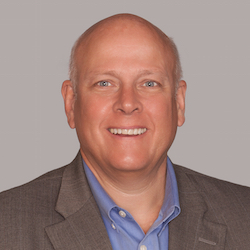Elders moving into today’s senior living communities have a younger mindset.
Eighty-year-olds by today’s standards no longer are considered old; they are now “only 80.” Years ago, those 80 or older were content with a senior living community simply if a it did not look and feel like a nursing home. When considering a community today, however, the savvy senior expects fitness centers, college-level educational programing, movie theaters and other contemporary amenities that enhance their active lifestyles.
Older adults are looking for more than a place to live. They expect to have a say in what their living looks and feels like. To remain competitive in today’s marketplace, the successful community will offer choice — and plenty of it.
One can see this trend across many customer experiences. In the past, cars and hotels had limited amenities. If you wanted a hair dryer or an ironing board in your hotel room, you had to call the front desk and maybe they would bring them to you — if they had them. If you wanted a vehicle with air conditioning, power locks and power windows, you would pay extra.
Now, if I do not receive a call from the hotel concierge when I check into my room to see if my accommodations are satisfactory, I wonder, ‘Hey, where is my call?’ Likewise, the standard package for many new cars includes backup cameras.
Will trends last?
In an effort to keep up with current and expected trends, senior living communities renovate every five to 10 years, with the understanding that doing so is the cost of doing business. The time to renovate is not when you have to but five years before you have to. The balance is to determine whether your renovations satisfy current and future trends or if they will fade away within a few years.
As an example, not that long ago, many residents were not tech-savvy, and few could navigate computers, cellphones, etc. The industry trend at the time was to mimic hotel media centers so that residents would have access and assistance with this technology. Yet today, the media centers sit empty while residents are busy with their tablets, laptops and smartphones.
Flexibility and choice are the top trends in senior living, spanning from physical offerings such as apartment finishes and dining options to programming such as fitness programs, educational offerings, payment options and how many olives are added to their martinis.
Our experience
The trends have been a guiding factor for our communities, St. John’s Meadows and Brickstone by St. John’s. Incoming residents want to be able to choose their countertops, cabinets and flooring. Accent walls now are painted in their favorite colors. Amenities such as fitness centers, pubs and fine art studios are not simply nice to have; they are the expectation. For today’s resident, having a say (choice) in the new home is the new normal.
Today’s residents not only want a fitness center; they expect a fitness center. Fitness, however, is not limited to treadmills but rather includes programs such as Qi Gong, hiking, cycling and pickle ball.
Similarly, today’s residents do not want good food; they expect good food. Choices now are offered in multiple venues, such as, formal dining, cafes, bistros, exhibition cooking, private dining rooms and personalized room service.
Another consideration related to resident choice is pricing options. Today’s resident prefers either the choice of an a la carte payment plan or an all-inclusive plan.
For example, this year, a resident may prefer to pick and choose which services he or she receives and pays for, and in a few years as needs change, may wish to switch to a bundled program where all services are included. The probability is that this trend will become the expectation for years to come.
Elder advocates
Finally, a trend that is becoming a popular and needed offering for communities is the elder advocate. This person is a trained social worker who supports the resident’s individual goals of remaining independent as long as feasibly possible.
When a resident believes he or she does not have adequate support systems in place or does not know what options may be available, the resident can turn to the elder advocate as a conduit for assistance.
If a resident who does not have family supports has a medical emergency and needs to go to the emergency department, the advocate will follow up with the resident at the hospital. The advocate will offer guidance and suggestions for further care, if needed, and help the elder understand the medical information provided by the medical center.
In short, the elder advocate is the family support that not every resident may have. The value of the relationship is resident independence, improved quality of life and freedom of choice.
Society’s preferences will continue to evolve, and trends will come and go. I confidently can forecast that community flexibility and choice will continue to set the bar, however.
Paul Bartlett is the vice president of senior living at St. John’s, a full-service care provider with options from independent living to skilled nursing and hospice in Rochester, NY. He can be reached at [email protected].
McKnight’s Senior Living welcomes guest columns on subjects of value to the industry. Please see our submission guidelines for more information.



